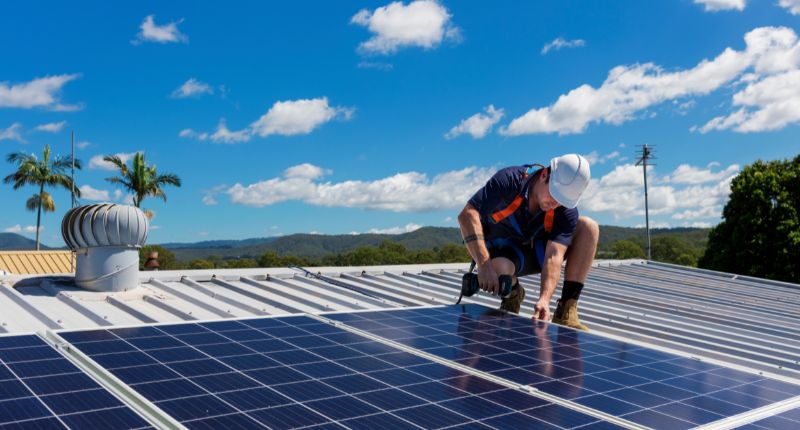- The benefits of solar panels are seen more in the long term
- Choose panels that are high quality and made from a reputable manufacturer
- Check for all available solar rebates and incentives in your state
As the ongoing cost of living crisis persists, inflation spiralling, and more interest rate rises look likely, many Australians struggling to pay their bills are searching for ways to save money.
According to the Consumer Reference Group (CRG), about a quarter of Australians struggle to pay electricity bills. This may get worse as electricity prices are set to rise by 20% to 25% from 1 July, according to the Australian Energy Regulator (AER).
One of the more popular ways savvy Australians have used to pare down their electricity bills is installing solar panels. Many states offer generous rebates for solar panel installations, solar panels can increase a property’s value, and experts state that households shave off more than $1000 from their energy bill per year.
Solar panels have taken off recently, growing from 118 systems in 2001 to more than three million. Data from the Clean Energy Regulator recorded 290,241 installations of small-scale solar panel systems in 2022. Nevertheless, navigating the solar panel market can be intimidating for a newcomer needing clarification on the vast number of options in the market.
“Installing solar panels is an excellent investment for your home, as it can significantly reduce your energy bills and even generate income through selling excess energy back to the grid. As energy bills are expected to increase by up to 24% as of 1 July, solar panels offer a great opportunity for customers to reduce their utility expenses. However, not all solar panels are created equal.”
Liam Navon, Smart Energy
6 expert tips for choosing solar panels
Smart Energy‘s tips include:
- Focus on energy efficiency,
- Spend more, save more,
- Choose the panel best suited for your home,
- Check if the manufacturer is well established,
- Use an appropriately sized system, and
- Claim government incentives when you can.
Focus on energy efficiency
A solar panel’s efficiency is a function of the level of sunlight it can convert to electricity. A more efficient panel will generate more electricity. When shopping for solar panels, choosing systems with a high energy rating will generate more electricity for your household and produce more savings.
Spend more, save more
Investing in a top-quality solar panel system from a reputable installer will prevent headaches associated with cheap alternatives—mediocre performance and expensive repairs. It is essential to familiarise yourself with the system’s warranty and maintenance requirements.
Choose the panel best suited for your home
The three major types of solar panels on the market are monocrystalline, polycrystalline, and thin film. Monocrystalline panels are the costliest but also the most efficient. Polycrystalline panels are less efficient but cheaper. Thin film panels are the least efficient of the lot but very flexible and, thus, suited for curved surfaces.
Check if the manufacturer is well established
Search for panels made by vendors with a proven history of manufacturing high-quality and durable solar panels. Check customer reviews and the manufacturer’s warranties before making a purchase.
Use an appropriately sized system
Your household needs and space requirements will dictate the size of your solar panel system. Work with your solar panel installer to ascertain the system size for your home, considering energy use, roof size, and the amount of sunlight available.
Claim government incentives when you can
All states offer rebates and incentives for installing solar panels to varying degrees, offsetting the installation cost and saving you more money. For instance, the National Solar subsidy program in Western Australia will help consumers save around $2600 on a 6.6-kilowatt (kW) system in 2023.
All state governments also offer feed-in tariffs, which allow solar panel owners to receive payments for any unused energy that their system exports to the mains grid.
~~
This article seeks to provide general information only. See our Terms of Use








